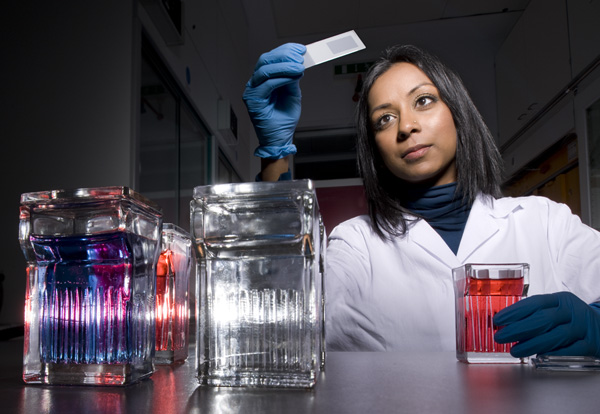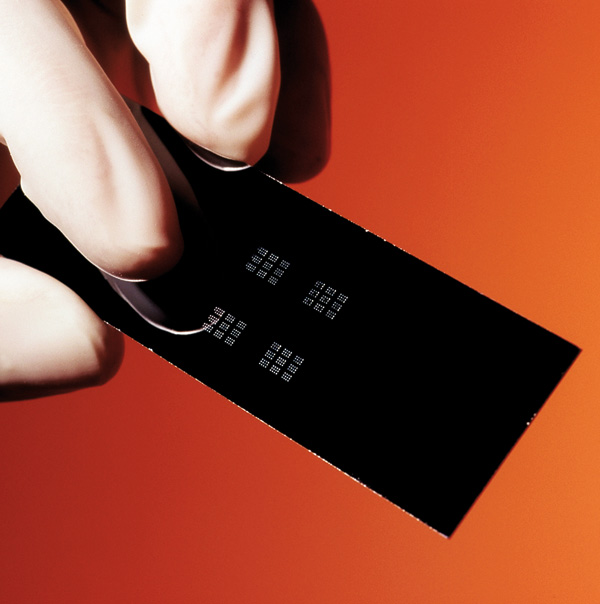Surface functionalization for biochips/microarrays


Biochips, or microarrays, are highly valued tools in life sciences laboratories that provide insight into material interactions in a very small space and with minimal sample requirements. A microarray consists of a large number of capture molecules that – immobilized in the form of tiny spots – bind and make detectable target molecules from a complex sample through molecular recognition.
The decisive factor for the sensitivity and specificity of a biochip is the appropriate chip surface. Multilayer systems of nanoparticles are suitable as surfaces for highly complex RNA/DNA and protein microarrays. They form three-dimensional reaction spaces and provide a manifold enlarged surface for the attachment of capture and target molecules.
For the production of NANOCYTES®-based biochips, nanoparticle surfaces are coated with organic functions or capture proteins and applied over a large area or in the form of microspots to carrier materials such as glass, silicon or polymer films. The application is carried out via inkjet printing, for example.
 Fraunhofer Institute for Interfacial Engineering and Biotechnology IGB
Fraunhofer Institute for Interfacial Engineering and Biotechnology IGB